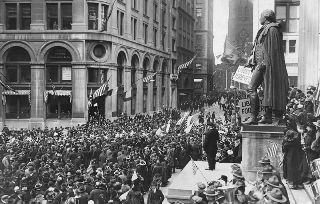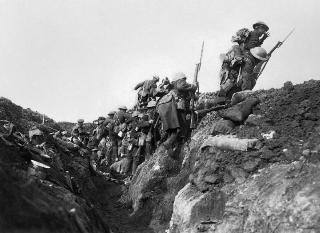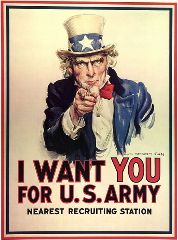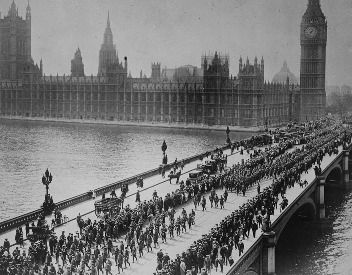As over two million American soldiers boarded the transport ships bound for France. More than one million American women sustained the wartime labor force. A great many jobs, which had previously been considered “man’s work,” were being filled by women, in the factory, the shipyard, and the armed forces. Women plowed the fields, fixed the cars, delivered the mail, ran the elevators and the streetcars, and even wrote the traffic tickets.

President Wilson encouraged employers to pay female workers the same wages they had paid men but few did. Even worse, when the war was over and men returned to the workforce, a great many women were fired. Other women contributed to the war effort by volunteering. They served in the Red Cross, sold liberty bonds, and planted victory gardens. Others, like Jane Addams and Carrie Chapman Catt, raised public awareness by actively demonstrating against war and militarism.
As the war dragged on, the nation began to appreciate the valuable contribution made by women in the war effort, creating a prime opportunity for a change in women's civil liberties. On January 10, 1917, Alice Paul and Lucy Burns of the National Women's Party took action. For almost a year they paraded and picketed the White House demanding passage of a constitutional amendment granting women suffrage—the right to vote. Wilson was out of office by the time the 19th amendment was ratified, but there was no doubt that the new role of women in America during World War One was a catalyst leading to the right to vote.
Society also had to come to grips with a new role for African-Americans. Like most Americans, African- Americans were divided in their opinions about the war. Many felt that African-Americans were victims of racism and should
not support a racist government.
At home, the war contributed to the large-scale
migration of more than half a million African-Americans into the industrialized
cities of the north. They provided the workforce desperately needed to produce
wartime goods. In addition, immigration into America had slowed to a trickle,
and many immigrants had returned to their native homelands, leaving more jobs
to be filled.

Despite the many women employed, companies were still short of
workers. Many African-Americans were anxious to leave the south and its pattern
of racial discrimination, low pay, and all-too-often life threatening
conditions. Between 1892 and 1919, approximately
three thousand African-Americans were killed by lynching, mainly in the south.
When
northern manufacturing companies sent recruiting agents with free railroad
tickets into the south looking
for laborers, hundreds of thousands of men and women boarded trains and headed
for cities like Chicago, New York
and Philadelphia.
Get comfortable and watch this 9 minute video on Women in WWI.
This 6 minute video about the Great Migration of African Americans during WWI.
One more 4 minute video about Alice Paul the suffragist.
Comment on the Blog today. Tell us one thing you learned from each video.




